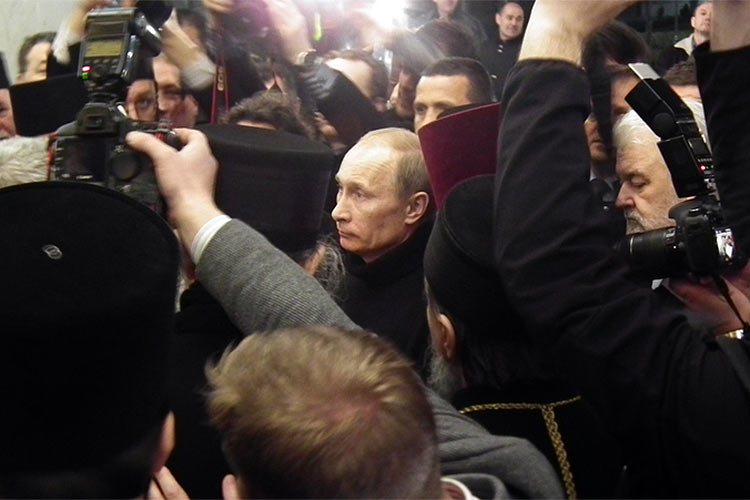According to the latest poll by the Levada Center, Vladimir Putin’s approval rating has reached 89%—a record figure for his 15-year hold on power. Alexander Podrabinek argues that since it is practically impossible to verify the trustworthiness of the figures involved, the results of the poll should be viewed skeptically.

Accounting for propaganda and potential falsifications, Putin’s support in the elections might be in fact about 25-30%. Photo: © Gurusvami | Dreamstime.com
In June the Levada Center pleased President Putin by releasing a new figure in his endlessly rising popularity ratings: 89%. Whether this figure should be taken seriously is largely a personal decision that depends on how much confidence one has in the polling institution. In general, it is customary to trust polling institutions more than journalists and politicians. Social scientists are supposedly part of the world of scholarly research , and thus it is considered totally unbecoming for them to lie. Yet the means by which this percentage was arrived at are unknown to the public at large. The pollsters release only the result, and if you choose not to believe it, then you might as well be part of the fifth column!
Verifying the trustworthiness of the final figure is practically impossible. Ultimately, polling institutions are private organizations and are not obliged to account to the public. It is nonetheless difficult to imagine, given the strict control they exert over television and other mass media, that the authorities would have neglected polling institutions. Public opinion polls can be a serious propaganda instrument; therefore, can it really be expected that the authorities would refrain from using such a tempting tool to influence society?
It is interesting that neither the Russian Public Opinion Research Center (VTSIOM) nor the Public Opinion Foundation (FOM) nor the Levada Center maintain their own networks of interviewers. They entrust the polling of respondents in Russian cities to local polling institutions, many of which are attached to local administrations. And, in fact, all Russian business is greatly dependent upon the authorities. Is it really possible, given the extent of these pollsters’ dependence on the authorities, to consider the polls reliable, especially when they concern political issues?
Another interesting fact is that according to Levada Center polls, Putin’s approval rating from 2000 up to the present has varied between 61% and 89%, averaging 77%. This rating is a good number and serves as evidence of the great love the Russian people have for Putin. But in all presidential elections from 2000 up to the present, only 36 to 46% of the electorate has voted for Putin. In none of the three elections that occurred over this period did Putin receive an absolute majority of votes. Some persons didn’t turn out for the elections, believing voting to be an empty gesture, some filled out their ballots incorrectly, and some voted for other candidates. Putin did not need to be elected by an absolute majority in order to win the elections, but these voting percentages don’t tally with the 77% approval rating.
In the national referendum held in the spring of 1991, 78% of voters favored preserving the USSR. But as soon as repression slackened, the Soviet Union fell like a house of cards, and no one especially regretted it.
It must be taken into account that the electoral figures given previously for the 2000, 2004, and 2012 elections are drawn from the official site of the Central Election Commission. These figures do not reflect potential falsifications, which many specialists estimate made up 20 to 25% of the totals. Thus, Putin’s support in the elections was in fact even less: from 25 to 30%. Where do Putin’s high approval ratings in the polls come from? The answer is obvious: they are dictated by propaganda needs. Putin needs a justification for his illegal occupation of the post of president and support for the Kremlin’s expansionistic foreign policy.
Anyone who is not inclined to doubt Putin’s ratings should recall past election results for deputies to the Supreme Soviet of the USSR and the soviets of the Union republics. These results were never less than 98 or 99%. The figures were used to demonstrate the uniform support of the Soviet people for the policies of the party and the government, but they had nothing to do with reality. In the national referendum held in the spring of 1991, 78% of voters favored preserving the USSR. But as soon as repression slackened, the Soviet Union fell like a house of cards, and no one especially regretted it.
Putin’s approval rating is inspired by the nostalgia of today’s authorities for the illusory Soviet unanimity. Those who desire a return to Soviet reality will always find a pretext for self-deception, but everyone else should be skeptical about propagandistic ratings.

